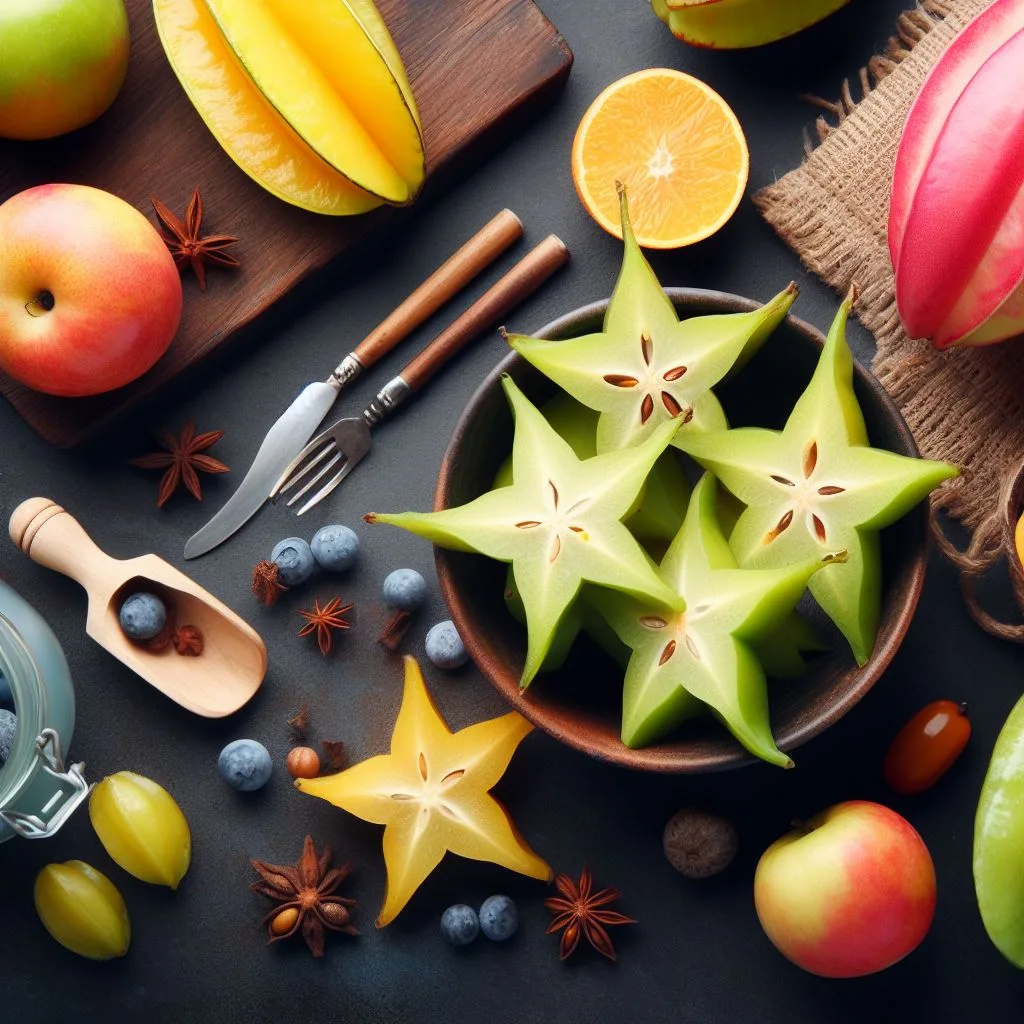
Star fruit, also known as carambola, is a tropical fruit that is becoming increasingly popular in various cuisines around the world. Its unique shape and vibrant color make it an attractive addition to any fruit salad or dessert. However, enjoying star fruit at its peak ripeness is crucial to fully appreciate its sweet and tangy flavor. In this guide, we will explore the various indicators of ripeness in star fruit and provide you with valuable tips on how to determine if a star fruit is ripe.
The Importance of Ripeness in Star Fruit
Determining the ripeness of star fruit is essential to ensure an enjoyable culinary experience. When star fruit is ripe, its flavor is at its best, offering a delicate balance between sweetness and acidity. Additionally, ripe star fruit has a crisp and juicy texture, making it a delightful treat to eat. However, consuming star fruit that is not yet ripe can result in a disappointing taste and a less pleasant texture. Therefore, it is crucial to be able to identify the signs of ripeness in star fruit before purchasing or consuming it.
Physical Characteristics of Ripe Star Fruit
One of the primary indicators of ripeness in star fruit is its physical appearance. A ripe star fruit will have a vibrant yellow color with a hint of green. The skin should be smooth and free from any blemishes or bruises. Avoid star fruit that has a pale or brownish color, as it is a sign of overripeness or spoilage. Additionally, the ridges on the surface of the fruit should be well-defined and symmetrical, indicating that the fruit has reached its full maturity.
Color Indicators of Ripeness in Star Fruit
The color of star fruit is an excellent indicator of its ripeness. As mentioned earlier, a ripe star fruit should have a bright yellow color with a slight green tinge. This color indicates that the fruit has matured fully and is ready to be consumed. However, it is important to note that the color may vary slightly depending on the variety of star fruit. Some varieties may have a more golden yellow color when ripe, while others may have a lighter or darker shade of yellow. Regardless of the specific hue, the key is to look for a vibrant and consistent color across the entire fruit.
Texture Indicators of Ripeness in Star Fruit
In addition to the color, the texture of star fruit is another crucial indicator of its ripeness. When you gently squeeze a ripe star fruit, it should yield slightly to pressure but remain firm. Avoid star fruit that feels too soft or mushy, as it may be overripe or spoiled. Conversely, a star fruit that feels hard and unyielding is likely underripe. The ideal texture is one that strikes a balance between firmness and juiciness, indicating that the fruit is at its peak ripeness.
Smell Indicators of Ripeness in Star Fruit
The aroma of star fruit can also provide valuable clues about its ripeness. A ripe star fruit will have a fragrant, tropical scent that is reminiscent of a blend of citrus and pineapple. If you detect a strong, sweet aroma when you bring the fruit close to your nose, it is a good indication that the star fruit is ripe and ready to be enjoyed. On the other hand, if the fruit has a faint or unpleasant odor, it may be underripe or starting to spoil.
Taste Indicators of Ripeness in Star Fruit
Of course, the most reliable indicator of ripeness in star fruit is its taste. When a star fruit is ripe, it should have a delightful balance of sweetness and acidity. The flesh of a ripe star fruit is juicy and crisp, with a slightly tart flavor that is reminiscent of a combination of apple, grape, and citrus. Avoid star fruit that tastes excessively bitter or sour, as it may be underripe. Similarly, if the fruit tastes overly sweet or has a bland flavor, it may be past its prime.
Testing the Ripeness of Star Fruit
To test the ripeness of a star fruit, you can perform a simple taste test. Cut a small slice from the fruit and take a bite. If the flesh is juicy, crisp, and has a pleasing balance of sweetness and acidity, it is a sign that the star fruit is ripe. If the flesh feels dry, lacks juiciness, or has an unpleasant taste, it may not be fully ripe. Additionally, it is essential to consider the other indicators of ripeness, such as color, texture, and smell, to ensure an accurate assessment of the star fruit’s ripeness.
Storing and Handling Ripe Star Fruit
Once you have determined that a star fruit is ripe and ready to be consumed, it is important to handle and store it properly to maintain its freshness. Ripe star fruit should be stored at room temperature for up to a week. Avoid refrigerating the fruit unless it is fully ripe and you intend to consume it within a day or two. The cold temperatures of the refrigerator can negatively affect the texture and flavor of star fruit, causing it to become mushy or lose its juiciness. To extend the shelf life of ripe star fruit, store it in a cool, dry place away from direct sunlight.
Conclusion
In conclusion, determining the perfect ripeness of star fruit is crucial to fully enjoy its unique flavor and texture. By considering the physical characteristics, color, texture, smell, and taste of star fruit, you can easily determine if it is ripe and ready to be consumed. Remember to perform a simple taste test to confirm the ripeness of the fruit. Once you have identified a ripe star fruit, handle and store it properly to maintain its freshness. With these tips, you can confidently select and enjoy the perfect star fruit every time.






